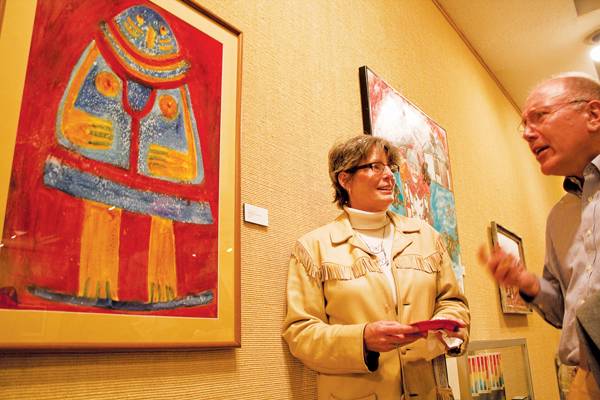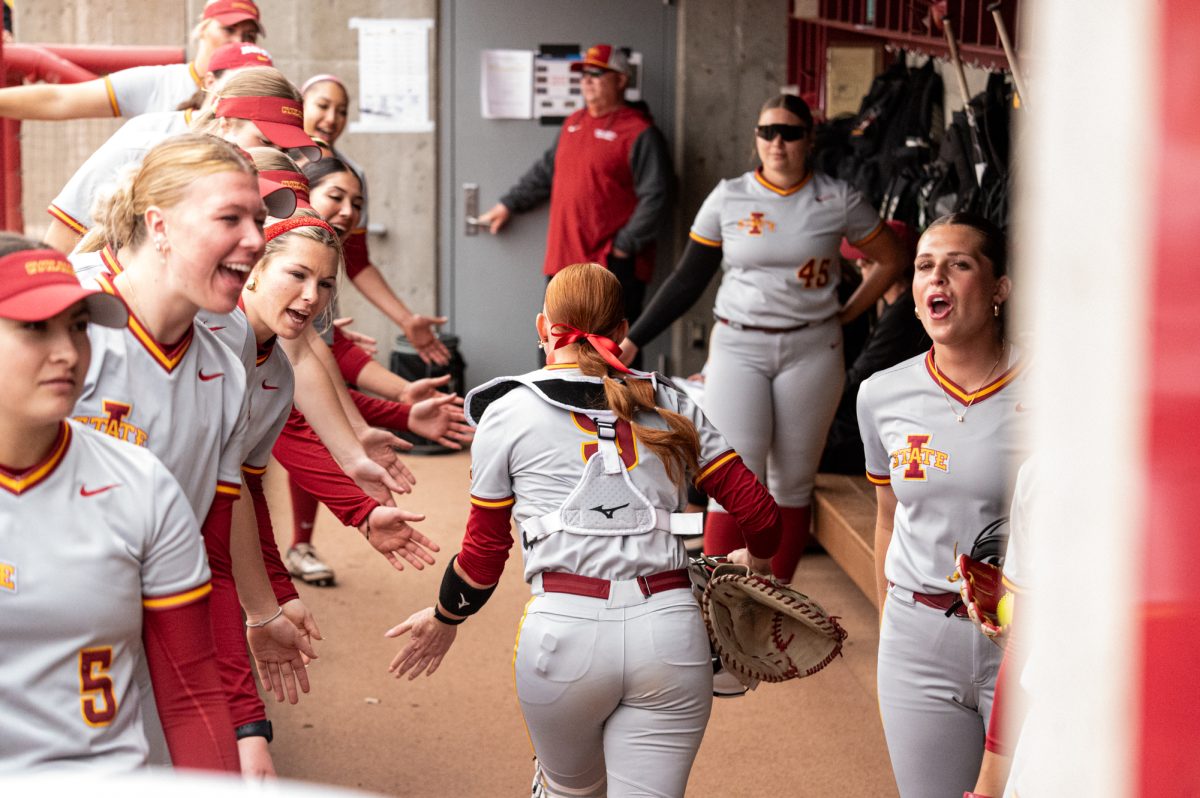Cancer survivor gets grant for digital-image art

Paula Streeter discusses her painting, “Self Portrait in Primary,” with an interested observer. Streeter’s painting was one of many entries at the FOCUS Juried Exhibit. Photo: Tim Reuter/ Iowa State Daily
April 12, 2009
After surviving breast cancer, Paula Streeter, graduate student in art and design, found a new respect for digital art — a style she harnessed in her FOCUS grant art piece.
Works from 11 artists were showcased Thursday night at the FOCUS 2009 Awards Showcase Program in the Pioneer Room and Gallery of the Memorial Union.
Working with digital images is new for Streeter, who received her undergraduate degree in drawing, painting and printmaking from Iowa State as well as her master’s in intermedia.
She said it wasn’t until after she survived breast cancer and realized “this technology is just remarkable” that she considered working with digital images.
“I had cancer and everything from my former life vaporized because of my cancer,” Streeter said.
Streeter’s FOCUS project was a collection of seven digital images on canvases, “Womanhood Refashioned: The Goddess, The Virgin, The Mother, The Witch, The Crone, The Prostitute, The Amazon.”
The FOCUS grant allowed Streeter to work with large digital imagery. A class with Carol Faber, assistant professor of art and design, struck Streeter’s interest in working digitally. Faber also served as her adviser.
“Every woman in her daily life has to wear so many different hats,” Streeter said.
On the floor beneath each canvas were items creating a kind of shrine for each image. Because shrines “constantly evolve and change” in the future, Streeter would like to paint on the images.
Each work shows “reflections of every woman,” she said. “They’re like the shrines to the facts of womanhood.”
Streeter said she used old academy cards, which artists used in the past, when they didn’t have live models.
“The whole series is each image has an old postcard of a woman,” Streeter said.
Some of the images are pixilated, an effect Streeter wanted, and she said she enjoys manipulating the images through layers in Adobe Photoshop.
“It’s like a game that never ends,” Streeter said.
Of all of the images, “The Crone” is her favorite, she said, because although the crone is not known as a pleasant person from a historical standpoint, she’s very wise. Beneath “The Crone” were leaves standing for the passing of time and ripped dictionary pages to represent knowledge.
Streeter said she avoided working digitally because in the past she lived in remote places such as Honduras where electricity isn’t available.
“I had lived a very fortunate life of being able to live in different places,” Streeter said.
In the future, Streeter said she would like to teach at the college level but she also wouldn’t mind teaching children.






